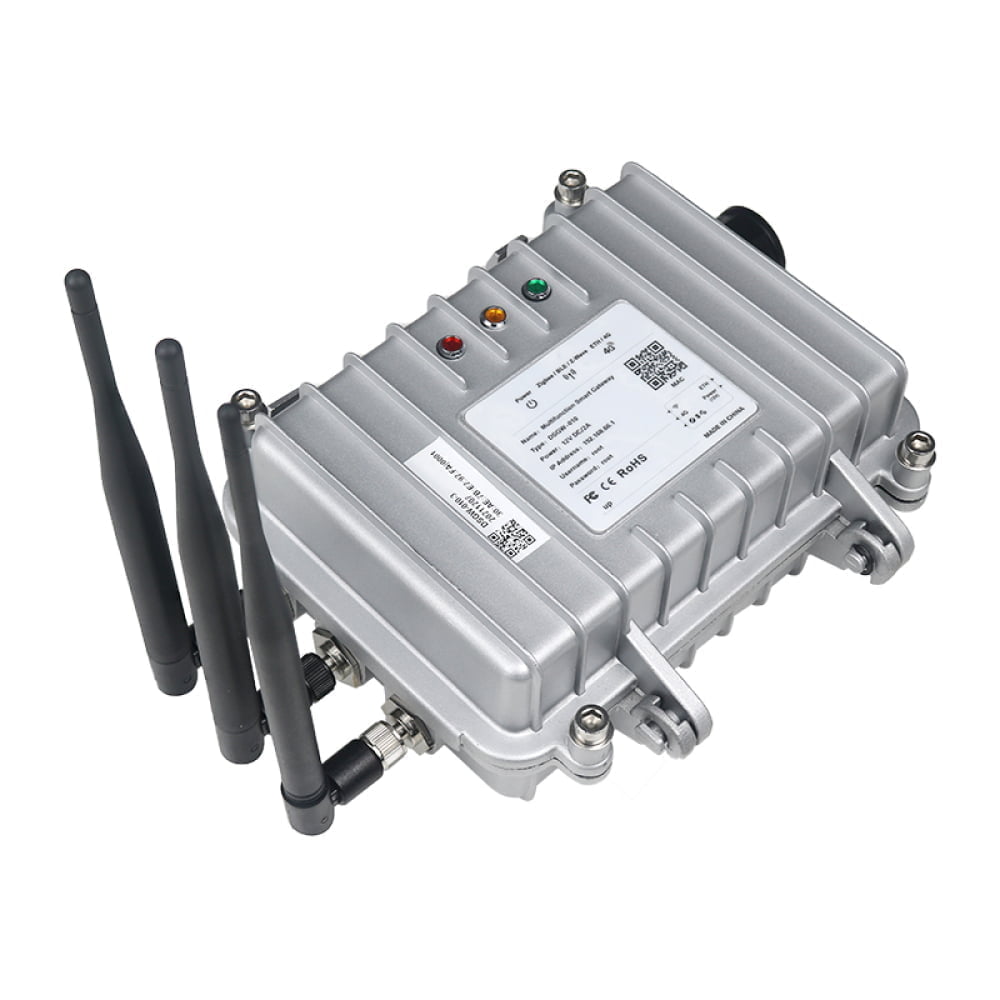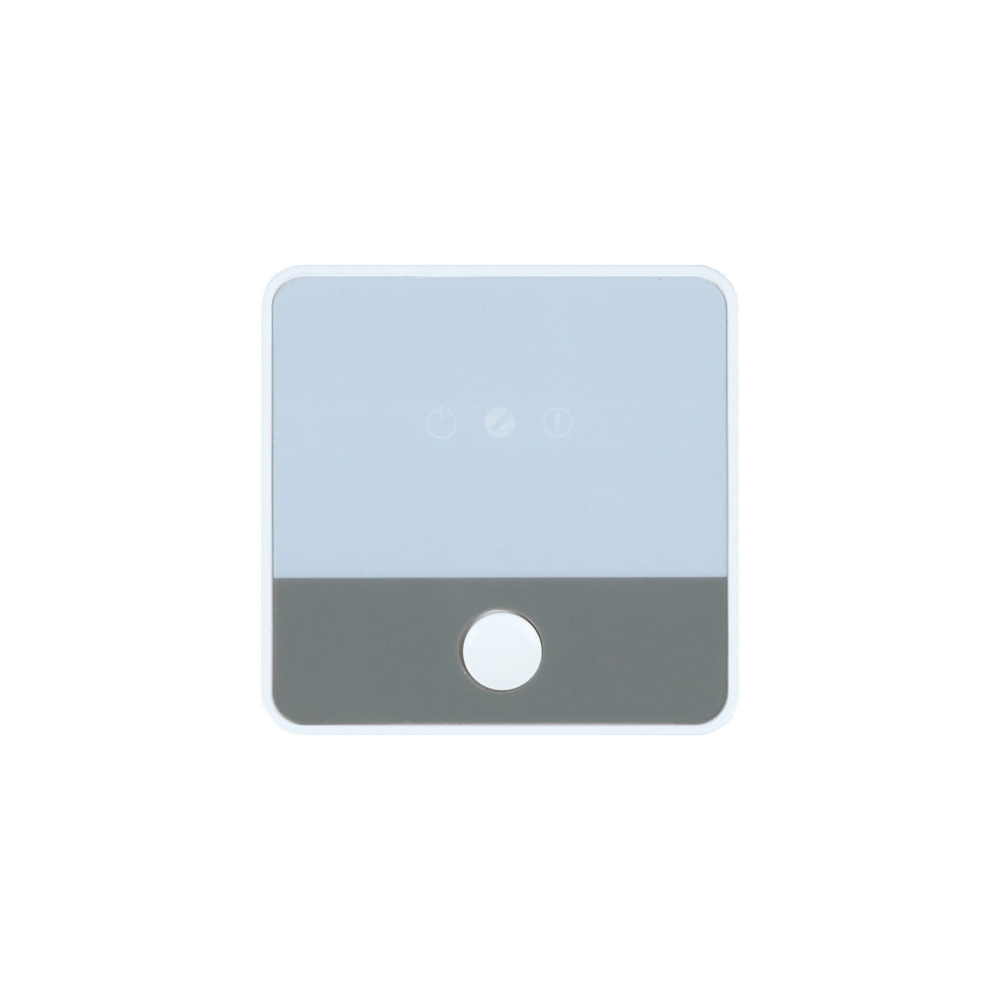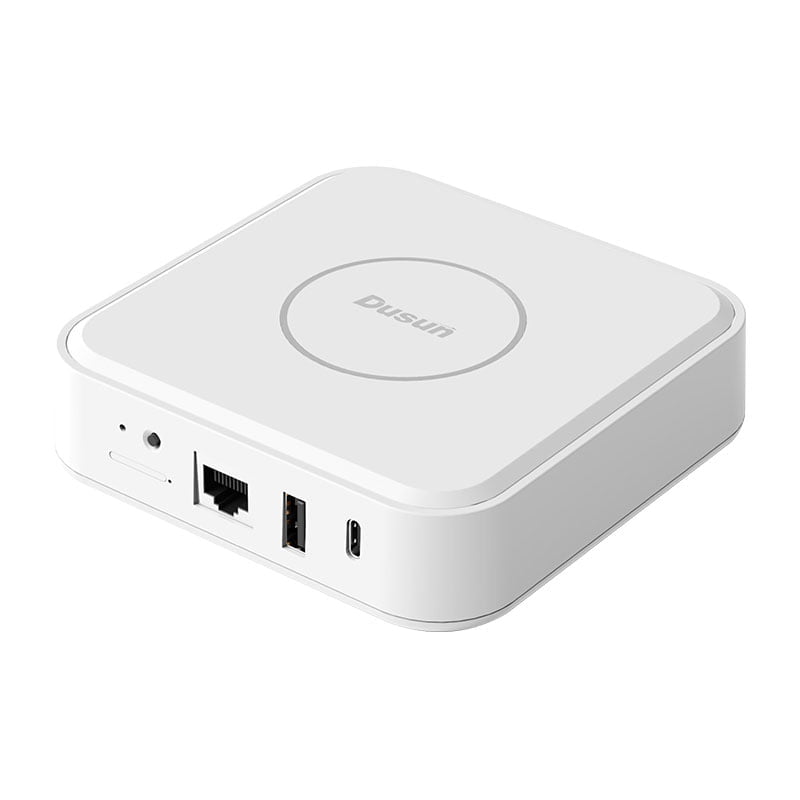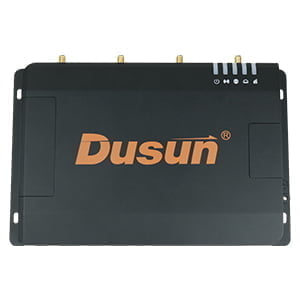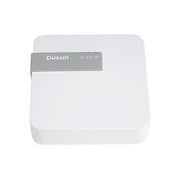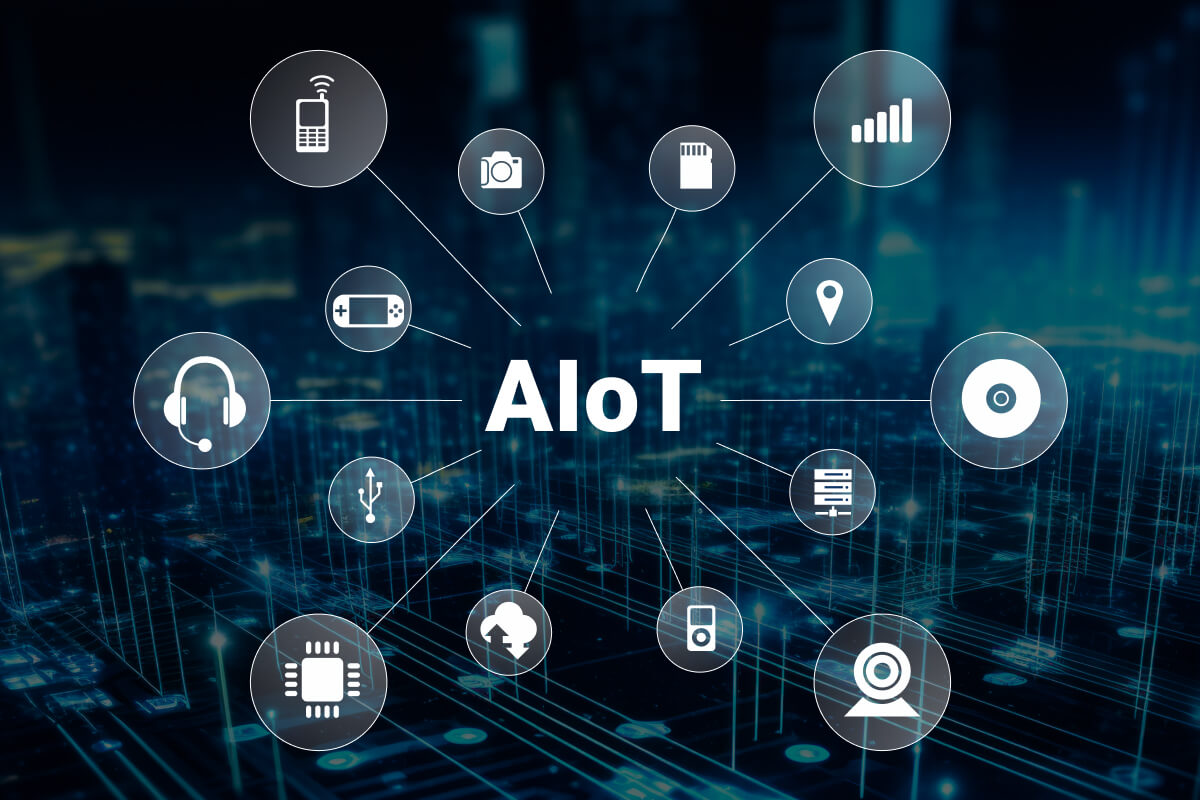As vehicles continue to house more electronics, the requirements for wireless communication both in and around the car have increased. When considering the best wireless communication protocol to use, you must analyze the attributes, benefits, and drawbacks of each option. So far, Bluetooth (BLE) has emerged as one of the best due to its low power, low cost, and reliable short-range communication.
Of course, BLE can’t handle all wireless functions in a vehicle, but it has proven successful in smart homes, smart buildings, and even some car applications in the past. Therefore, it has emerged as the best technology for some Internet of Vehicles applications.
Let’s analyze why BLE gateways are a popular choice for V2X applications and look at some of the recommended BLE gateways for automotive IoT.
What Does V2X Cover?
V2X stands for Vehicle-to-Everything, and it refers to the wireless communication between the vehicle and its driver, passengers, other vehicles, the surroundings, and external networks. This wireless communication involves these seven components.
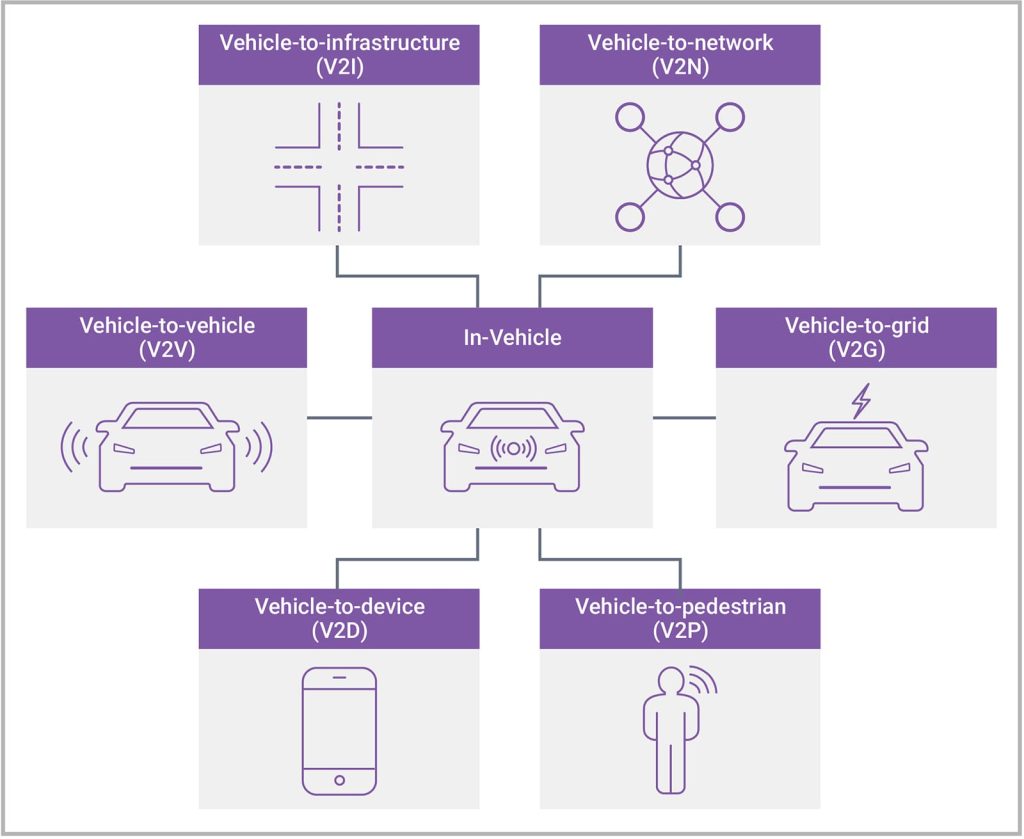
V2I (Vehicle-to-Infrastructure)
V2I refers to the wireless communication between cars and road or highway infrastructure, such as smart road signs or traffic lights. This data exchange is meant to improve road safety by helping to avoid motor vehicle crashes.
V2N (Vehicle-to-Network)
Vehicle-to-network enables cars to exchange data with the cellular network to allow both broadcast and unicast communication. This data exchange provides real-time traffic updates and smart navigation to the vehicle and driver.
V2V (Vehicle-to-Vehicle)
V2V communication makes it possible for cars to exchange data on things like speed, direction, and location in real-time while on the road in the same area. This communication gives each car a clearer picture of its surroundings and helps them to respond to different road situations. V2V can be seen in features like blind-spot detection and lane-change assist.
V2G (Vehicle-to-Grid)
V2G communication only applies to EVs. The technology powers bi-directional charging, where electric vehicles can push back power to the grid depending on different signals, such as increased energy consumption nearby. The goal is to use EVs as battery packs that can help manage renewable energy demand better and balance the grid during peak demand.
IVC (In-Vehicle Communication)
In-vehicle communication refers to all the data exchange that occurs within the vehicle. Instead of using heavy and expensive copper cables in CAN bus-based communication, car systems, like the Battery Management System (BMS), are migrating to wireless communication, which is proving to be more reliable as well.
V2D (Vehicle-to-Device)
V2D is the exchange of information between the vehicle and a connected device, usually a smartphone. This connection allows the user to stream audio or access the phone’s features via apps like Apple CarPlay and Android Auto on the head unit. Smartphones can also replace keyfobs to lock and unlock the car.
V2P (Vehicle-to-Pedestrian)
V2P’s aim is similar to that of V2I, which is to enhance safety. In cities and areas with high populations of cars and pedestrians, vehicles equipped with V2X connect to pedestrians’ smartphones and wearables that run V2P apps.
With the connection established, the pedestrian devices broadcast their position to nearby vehicles to alert the driver. The car also broadcasts its position to the pedestrian’s devices to improve awareness.
Is Bluetooth Applicable To All V2X Applications?
From the V2X categories discussed above, it is obvious that Bluetooth cannot work for all of them.
For instance, V2N involves exchanging data with the cellular network or cloud over a long-range, so it requires LTE or 5G connectivity.
On the other hand, V2I and V2V require medium-range (less than a kilometer) wireless communication, which can be serviced using cellular networks. It can also be serviced using IEEE-802.11p or Wireless Access in Vehicular Environments (WAVE), a recently developed international standard for these intelligent transportation systems.
This means BLE is only viable for V2X communication in the IVC, V2D, V2G, and V2P categories.
Why Use Bluetooth Gateways for IVC, V2D, V2G, and V2P?
BLE is known for its low power consumption, low cost, and reliable short-range communication. These factors make Bluetooth gateways suitable for V2X applications like IVC, V2D, V2G, and V2P. Here’s why you should use Bluetooth gateways for these functions in vehicles.
Bluetooth Gateways for In-Vehicle Communication
BLE gateways have an effective range of less than 100 meters or 330 feet. This wireless transmission distance is enough to cover the spacing between systems or modules installed in the vehicle.
With the BLE gateway mounted somewhere in the middle of the car, such as in the dashboard, all sensors and actuators can connect and send data to it, which will then forward it to the relevant ECUs.
This setup eliminates the wiring complexities associated with linking the sensors and actuators to the ECUs via the CAN bus. The vehicle can also have multiple Bluetooth gateways if the end nodes exceed 32. Alternatively, you can implement a mesh network, which can accommodate up to 32,767 sub-devices.
These sub-devices include charge controllers for battery management systems in EVs and tire pressure sensors for Tire Pressure Management Systems.
The good thing with Dusun BLE gateways is that they can connect to sub-devices from other manufacturers. Each hub has an API that enables third-party devices to connect to the wireless network and transmit data. The gateways collect advertising data from the sensors and upload it to the backend, which will be the relevant ECU.
Dusun BLE gateways also allow bi-directional transmission, which will allow the ECUs to control end nodes like actuators and charge controllers. You only need the device parameters, like UUID. Dusun’s FAE team will help you create the downlink connection to make the entire system work.
Bluetooth Gateways for Vehicle-to-Device
he automotive industry is rapidly evolving, driven by the increasing demand for smarter, safer, and more connected vehicles. ]Vehicle-to-Device (V2D) communication plays a crucial role in this transformation, enabling vehicles to exchange information with surrounding devices, such as sensors, infrastructure, and other vehicles. For example, the in-vehicle IoT gateway can be used to control the cabin of a drone to operate a drone, control the child seat (rotate, adjust the angle, monitor the baby’s status), etc.
However, traditional V2D solutions often face challenges in terms of scalability, reliability, and cost-effectiveness, considering that existing in-vehicle devices such as DHU, TCAM, and TBox do not have IoT functions. This hinders the widespread adoption of V2D technologies and limits their potential to revolutionize the automotive landscape.
Dusun BLE Gateway is the answer to these challenges. Leveraging the power of Bluetooth SIG Low Energy (BLE), Dusun BLE Gateway provides a robust and scalable solution for V2D communication, enabling seamless data exchange between vehicles and their surroundings.
As shown in the two example block diagrams, the Dusun IoT gateway connects to various IoT devices through BLE, and interacts with various modules in the car (such as TCAM and DHU) and the cloud through WiFi, thereby achieving all-round intelligent control.
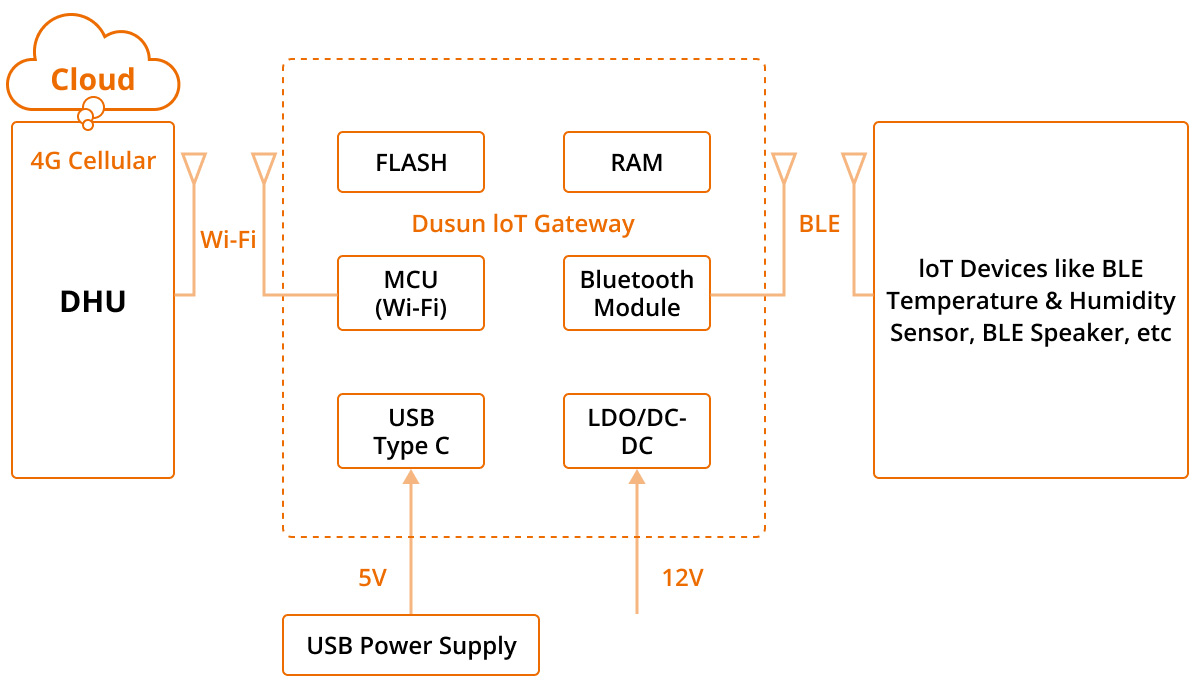
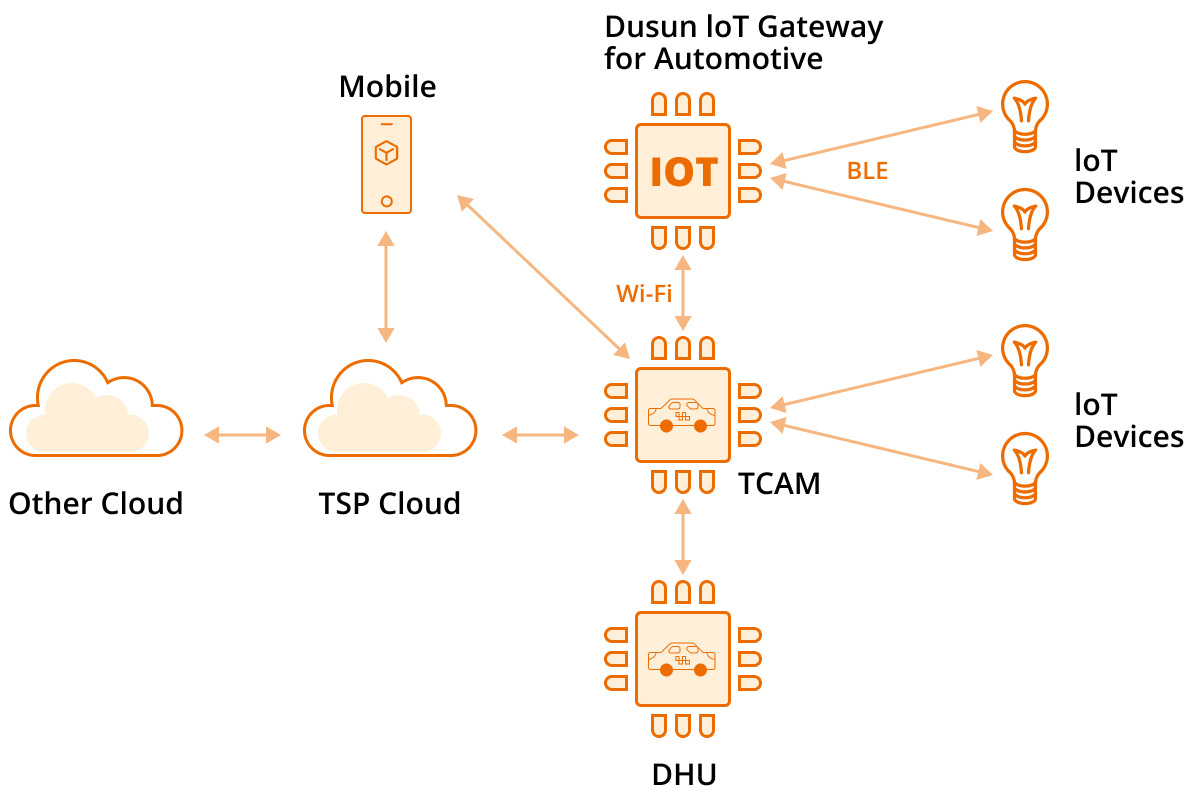
Vehicle-to-device connections usually involve phones with Bluetooth connectivity, which is a standard feature in smartphones. Therefore, incorporating a BLE gateway in the vehicles can unlock several features.
While it is possible to link smartphones to infotainment systems, car manufacturers can take it up a notch, such as by making phone key fobs standard.
A BLE gateway with edge processing capability can operate car door locks and enable remote control of several functions like engine starting straight from the customer’s smartphone.
This feature is not new, but using BLE gateways has several advantages. For instance, BLE is more secure than traditional key fob systems because the connection between the phone and vehicle is encrypted.
Secondly, BLE gateways offer a cost-effective remote control solution because it is easy to install and maintain. Remember, the gateway connects to several other car systems and can enable other functions like:
- Door locking/unlocking
- AC or temperature setting after starting the engine
- Adjusting the infotainment system (radio station selection)
- Mirror positioning
- Seat adjustment
If the car has several authorized users, the BLE gateway can authenticate them using unique digital access keys. This identification and authentication can automatically customize the settings inside the vehicle to suit the specific user.
Bluetooth Gateways for Vehicle-to-Grid
V2G is the concept that EVs can act as battery backups for the grid, supplying power back depending on the energy demand. Bi-directional charging stations or charging coils installed under asphalt on the roads will enable this function.
Either way, BLE gateways should provide a backchannel for the vehicle’s battery management system and the cloud or server that controls the grid. The gateway should transmit vital metrics, such as the power transmitted back to the grid, while also uploading data about the battery health and charging/discharging status to the user’s mobile app via the cloud.
Bluetooth Gateways for Vehicle-to-Pedestrian
The 100-meter or 330-foot range provided by BLE is sufficient to detect pedestrian smartphones and wearables that are within the high-risk zone (near the vehicle). However, you can use long-range BLE gateways for this function to communicate with pedestrians as far as 1km away.
These long-range BLE gateways are cost-effective solutions for creating more precise tracking and monitoring systems for pedestrian devices. The 1km range is also a reasonable distance that gives time and room for the pedestrians and driver to react and get out of each other’s way.
Bluetooth Gateway Recommended for Automotive IoT
Dusun IoT offers a diverse selection of BLE gateways built on a variety of System on Modules (SoMs) and System on Chips (BLE SoCs) to assist enterprise developers in swiftly customizing their Bluetooth Low Energy gateways for system integration and proof of concept (POC). Expert FAE team supports SDK, API, and firmware programming. Data collection, bi-directional communication, interior location application, and numerous indoor and outdoor scenarios are all enabled.
Automotive electronics are usually exposed to the elements, which makes the DSGW-010-3 BLE waterproof BLE gateway an ideal candidate for car use. This hub is ideal for V2P applications because it is a long range BLE gateway (150 meters minimum). Additionally, it has a transfer rate of up to 2Mbps, which is sufficient for the communication channel, and it can run on a 12V adapter power supply, making it compatible with most vehicles.
On the other hand, the DSGW-030-4 Zigbee BLE Wi-Fi gatway can work for V2D and IVC applications because it supports BLE sensors, iBeacon, SIG mesh, and Eddystone. Additionally, it is a multiprotocol hub that features Wi-Fi and ZigBee, which can link to other sensors in the vehicle or the user’s phone. The built-in USB port can also provide wired smartphone connectivity.
These two gateways can provide the backhaul link to the cloud as well for V2G applications. Other notable BLE gateways you can consider are the DSGW-210 BLE Edge computing Gateway, DSGW-089 Industrial BLE Edge Computing Gateway, and DSGW-094 Nordic Bluetooth Cellular Gateway.
Final Thoughts
Vehicles are becoming more intelligent with V2X, and BLE gateways are the primary enablers of this tech. So, as a car manufacturer, you need to incorporate BLE gateways into your designs to enable the features described above and even reduce the weight and complexity associated with wiring.
Our programmable ble gateways support secondary development, and we provide open SDKs to enable you to develop custom vehicle apps. If you need custom-built V2X BLE gateways, we provide ODM and OEM services at a reasonable turnaround time. Get in touch with us for further details about your V2X project, and we’ll help you actualize it.







